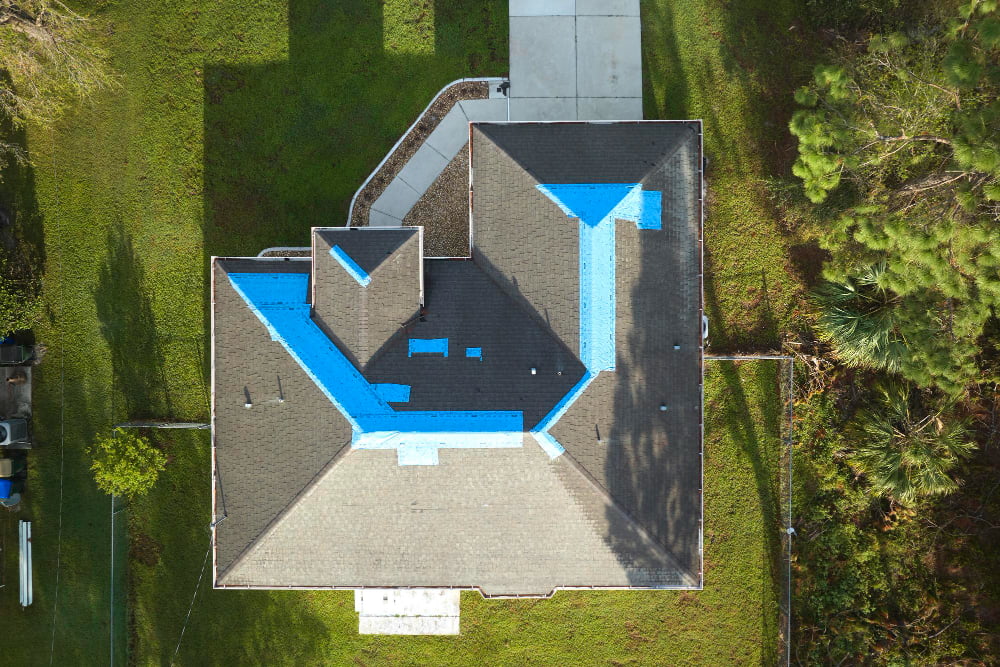Last updated on
When it comes to your home, few things are as crucial as a sturdy roof. It shields you from the elements, ensuring safety and comfort. However, emergencies can strike at any moment, putting your roof at risk of damage. Here are the essential steps for handling roof emergency repairs, empowering you to address issues promptly and effectively.
Hiring Professional Help

While some repairs can be handled independently, certain emergencies necessitate professional expertise. Understand when it’s time to call in a roofing contractor. For example, in Canada, Edmonton roofing professionals excel in addressing the unique challenges posed by the region’s diverse climate, showcasing a wealth of expertise in handling everything from heavy snow loads to sudden temperature fluctuations.
Professionals can identify underlying issues, provide comprehensive repairs, and offer guidance on preventive measures to safeguard your roof in the long run.
Assessing the Damage
The first critical step in addressing a roof emergency is assessing the damage. Grab a flashlight and inspect your attic for leaks, water stains, or any signs of structural compromise. On the exterior, look for missing or damaged shingles, sagging areas, and displaced flashing. Understanding the extent of the damage will guide your subsequent actions.
Interior Inspection
Start your assessment by inspecting the interior of your home. Head to the attic with a flashlight and carefully examine the ceiling for water stains, dampness, or visible leaks. These early signs can provide crucial insights into potential roof damage.
Exterior Examination
Move outdoors to evaluate the exterior of your roof. Look for missing or damaged shingles, cracks, or areas with noticeable sagging. Pay attention to the condition of the flashing around chimneys, vents, and skylights. Identifying these issues early on is key to preventing further damage.
Check Gutters and Downspouts
Clogged gutters and downspouts can exacerbate roof damage. Inspect these components for debris, leaves, or any blockages that may hinder proper drainage. Addressing this issue can help prevent water buildup on your roof, reducing the risk of leaks and structural damage.
Evaluate Surrounding Trees
Assess the proximity of trees to your home, especially overhanging branches. Storms or strong winds can cause branches to break and fall onto your roof, leading to significant damage. Trim back branches that pose a threat to avoid potential emergencies in the future.
Temporary Fixes

When a roof emergency occurs, quick action is paramount. Learn some temporary fixes to mitigate immediate damage. Utilize roofing tarps or plywood sheets to cover exposed areas, preventing water from infiltrating your home. These stopgap measures provide a temporary barrier until a comprehensive repair can be undertaken.
Safety First
Before diving into emergency repairs, prioritize safety. If you are uncomfortable navigating heights or uncertain about the severity of the damage, it’s best to consult professionals. Safety precautions such as wearing non-slip shoes and using a sturdy ladder are crucial. Remember, your well-being is paramount throughout the repair process.
DIY Repair Tips
Certain roof emergencies can be addressed with DIY solutions. Learn how to replace a damaged shingle, fix minor leaks, or reattach loose flashing. Having these skills in your toolkit can be invaluable when a quick fix is needed, especially in situations where immediate professional help may not be accessible.
Shingle Replacement
If you notice a missing or damaged shingle, it’s a relatively simple DIY fix. Carefully remove the damaged shingle by lifting the edges of the surrounding ones and sliding it out. Place a new shingle in its position, ensuring it aligns with the existing ones. Secure it in place with roofing nails and seal the edges with roofing cement for added durability.
Leak Patching
Addressing a minor roof leak promptly can prevent significant water damage. Locate the source of the leak and clean the area thoroughly. Apply roofing cement or silicone sealant to seal the leak, creating a watertight barrier. For added protection, cover the patched area with a piece of heavy-duty roofing fabric and apply another layer of sealant.
Flashing Repair
Loose or damaged flashing around chimneys, vents, and skylights can lead to leaks. Use a pry bar to gently lift the affected flashing, remove any old caulking, and clean the area. Install a new piece of flashing, ensuring a snug fit, and secure it with roofing nails. Finally, apply roofing sealant to the edges for weatherproofing.
Insurance Claims
In the aftermath of a roof emergency, navigating insurance claims can be complex. Familiarize yourself with the process, document the damage thoroughly, and communicate promptly with your insurance provider. A swift and accurate claims process ensures you receive the necessary financial support for comprehensive repairs.
Your roof is your home’s first line of defense, and responding effectively to emergencies is crucial. By mastering the art of assessment, temporary fixes, safety measures, DIY repairs, professional assistance, and insurance claims, you’ll be well-equipped to tackle any roof emergency that comes your way.
Recap:



